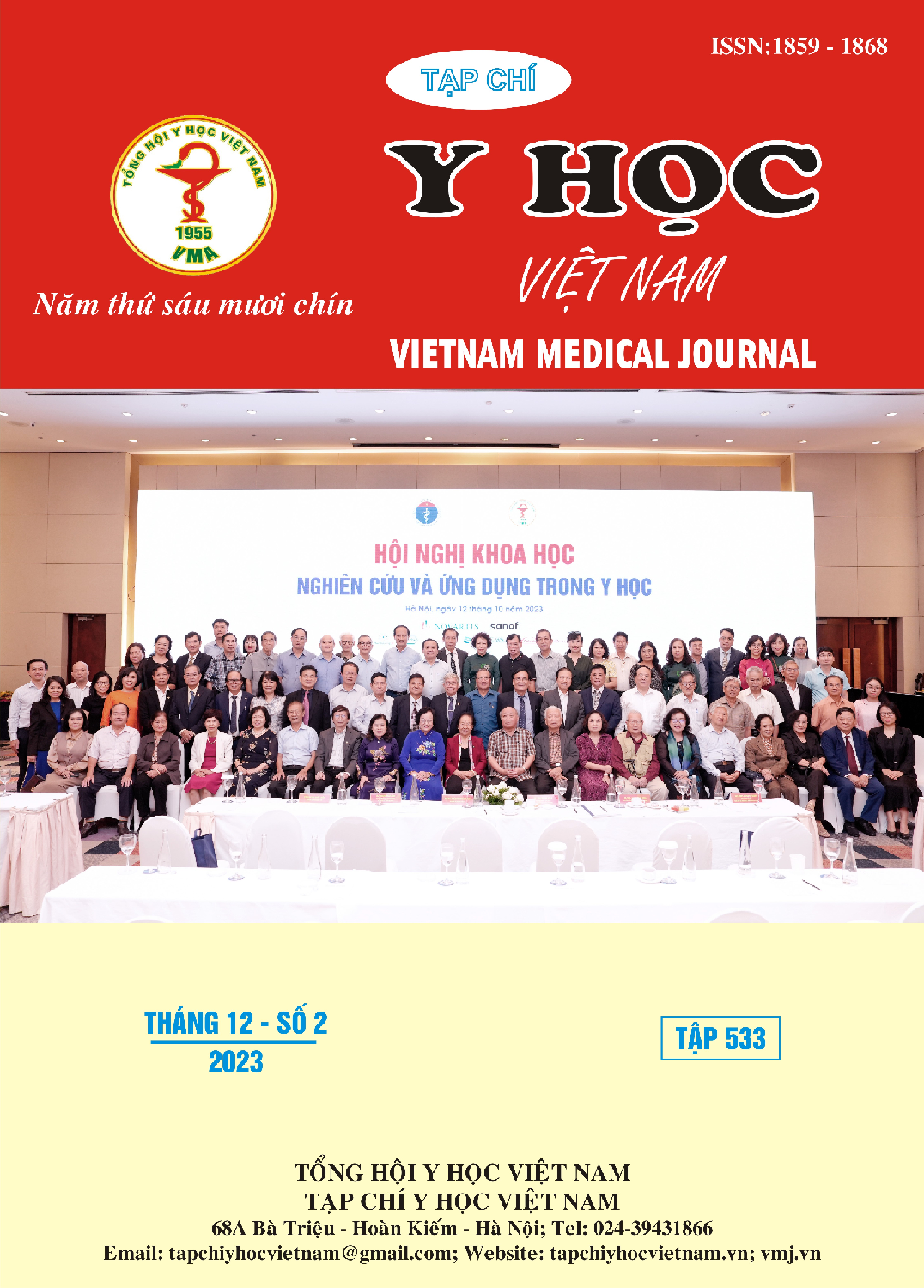EVALUATION THE STATE OF ACUTE KIDNEY INJURY IN SEVERE TRAUMA PATIENT AT SURGICAL INTENSIVE CARE DEPARTMENT- DA NANG GENERAL HOSPITAL
Main Article Content
Abstract
Objectives: To evaluate the incidence, severity and risk factors of acute kidney injury in patients with severe trauma in the Surgical Intensive Care Department. Subjects and methods: A prospective, cross-sectional study on 70 patients diagnosed with severe trauma at the Department of Anesthesia and Surgical Intencive Care, Da Nang General Hospital from January 2021 to August 2021. The patients were taken medical history; disease process; recorded general characteristics; characteristics and severity of trauma; clinical feature, stage and risk factors of acute kidney injury. Result: The rate of acute kidney injury was 27.1% in patients with severe trauma. Stage 3 acute kidney injury accounted for the highest rate with 52.6% cases. Clinical factors associated with the risk of acute kidney injury include: ISS score, SOFA score, volume of transfusion, use of vasopressors, use of nephrotoxic drugs, and sepsis. The subclinical factors associated with the risk of acute kidney injury include: serum level of CPK, lactate, excess alkalinity and hemoglobin. Conclusions: Acute kidney injury is a common condition in patients with severe trauma in the Surgical Intensive Care Department. Adequate assessment of risk factors for acute kidney injury can contribute to predicting prognosis and response to treatment as well as appropriate treatment attitude to minimize complications and mortality for patients.
Article Details
References
2. S. Søvik et al., “Acute kidney injury in trauma patients admitted to the ICU: a systematic review and meta-analysis,” Intensive Care Med., vol. 45, no. 4, pp. 407–419, Apr. 2019, doi: 10.1007/ s00134-019-05535-y.
3. Nguyễn Nhật Hoan, Trịnh Văn Đồng, “Đánh giá các yếu tố nguy cơ gây suy thận cấp ở bệnh nhân chấn thương tại khoa hồi sức tích cực bệnh viên Việt Đức.” 2008.
4. A. Harrois, N. Libert, and J. Duranteau, “Acute kidney injury in trauma patients,” Curr. Opin. Crit. Care, vol. 23, no. 6, pp. 447–456, Dec. 2017, doi: 10.1097/MCC.0000000000000463.
5. Z. L. Cox et al., “Adverse drug events during AKI and its recovery,” Clin. J. Am. Soc. Nephrol. CJASN, vol. 8, no. 7, pp. 1070–1078, Jul. 2013, doi: 10.2215/CJN.11921112.
6. S. Kheterpal et al., “Development and validation of an acute kidney injury risk index for patients undergoing general surgery: results from a national data set,” Anesthesiology, vol. 110, no. 3, pp. 505–515, Mar. 2009, doi: 10.1097/ALN.0b013e3181979440.
7. P. A. Gabow, W. D. Kaehny, and S. P. Kelleher, “The Spectrum of Rhabdomyolysis:,” Medicine (Baltimore), vol. 61, no. 3, pp. 141–152, May 1982, doi: 10.1097/00005792-198205000-00002.
8. J.-H. Jheong, S.-K. Hong, and T.-H. Kim, “Acute Kidney Injury After Trauma: Risk Factors and Clinical Outcomes,” J. Acute Care Surg., vol. 10, no. 3, pp. 90–95, Nov. 2020, doi: 10.17479/jacs.2020.10.3.90.


